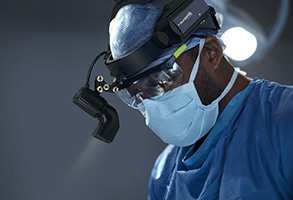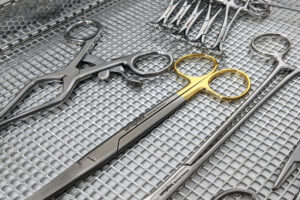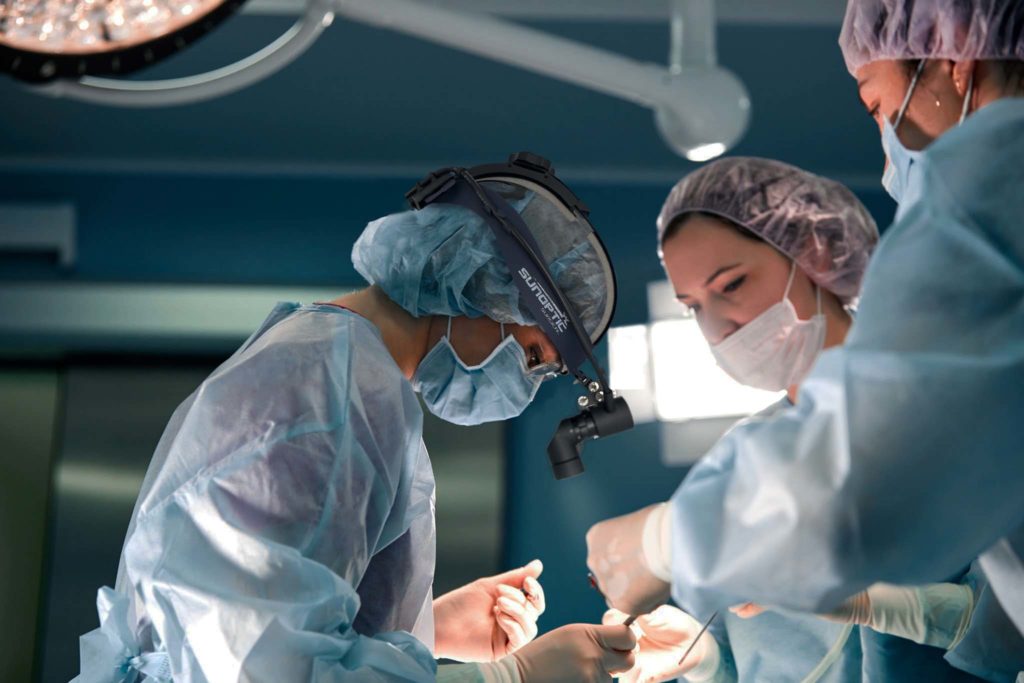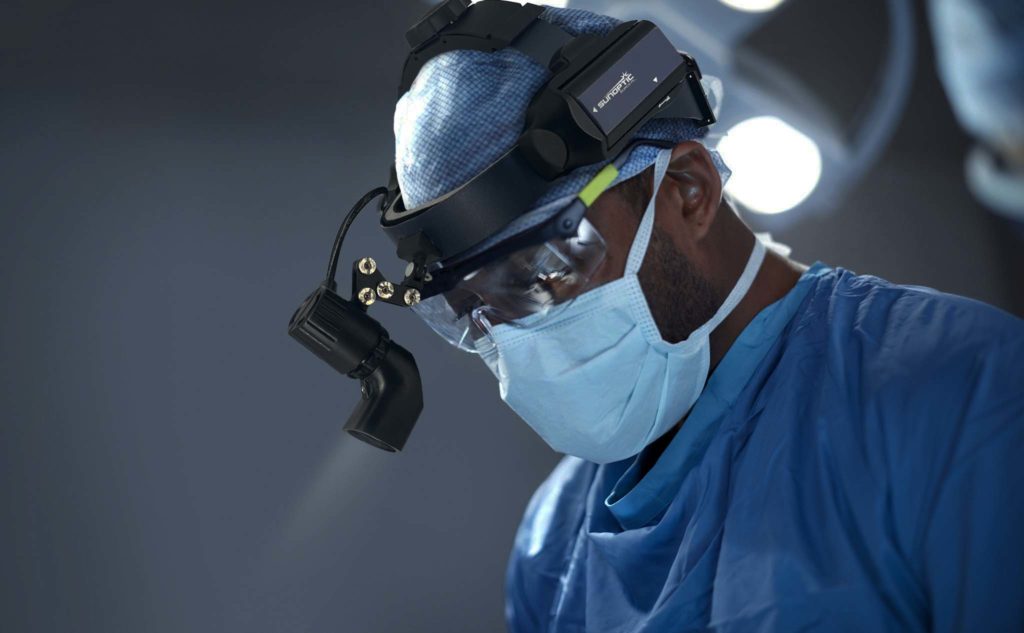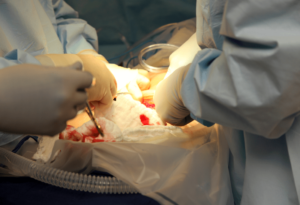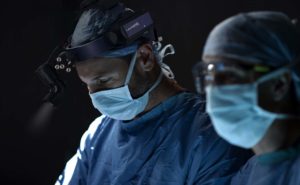Surgical headlights have been a vital tool in the operating theatre since the mid-1800s when surgeons used reflectors and mirrors to redirect natural or candlelight onto the surgical site. Over 175 years later, surgical headlights, sometimes referred to as surgical headlamps, remain an essential part of the surgical toolkit.
Advances in LED technology have meant portable LED headlights now surpass the brightness and clarity of traditional halogen and some xenon light sources. There is a common complaint from surgeons that tethered headlights limit mobility1. The freedom portable headlights offer, paired with the reduction of clutter in the operating theatre, has led to a surge in their use.
As technology has progressed, so has headlight design. Manufacturers have introduced different configurations to enhance comfort, mobility, and performance, with two main styles of portable headlights emerging, wired and wireless. This has led to a debate among surgeons, which design is superior?
Portable Wired Surgical Headlights
Not to be confused with tethered surgical headlights that connect to a xenon, LED or halogen surgical light source box, portable wired LED headlights, such as the LX2, have a battery holster that goes into the surgeon’s scrubs pocket or clips on a belt. This design maintains the surgeon’s ability to be mobile and allows switching sides of the operating table when required.
One of the key advantages of the wired design is that it removes one of the heaviest components of a surgical headlight from the head of the surgeon. It is suggested that the extended use of heavy, outdated headlights can contribute to occupational-related musculoskeletal disorders1. The wired design could potentially help significantly lower this risk by reducing weight on the head.
Surgical headlights require a balance between light output and battery life. Advancements in lithium technology have allowed batteries to become smaller and improve efficiency. Despite this, the more powerful the surgical headlight, the higher the energy demand, which naturally means a larger battery.
By using a wired design, manufacturers can use larger batteries, which means more powerful headlights without compromising on battery life. Therefore, portable wired headlights tend to be more powerful, resulting in more light than their wireless counterparts.
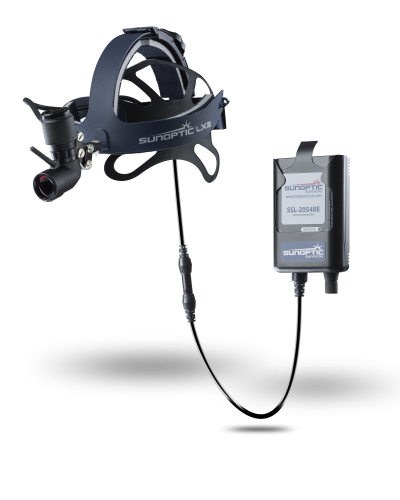
‘Wireless’ Surgical Headlights
The alternative is a ‘wireless’ design, like the SSL-5500, where the batteries are positioned on the surgeon’s headlight, meaning there aren’t any trailing wires. This style of headlight offers the surgeon complete freedom from wires, which comes with several advantages. The first is that it is a lot easier to take the headlight off for parts of the procedure that don’t require additional light; while possible with a wired headlight, it isn’t as easy.
As ‘wireless’ surgical headlights tend to produce less power than wired surgical headlights, they have a lower requirement for energy, which means batteries can be smaller or have longer battery life. Therefore, it is common for ‘wireless’ headlights to have a longer battery life than wired headlights.
Another advantage of a ‘wireless’ design is the ability to change batteries without having to manoeuvre around the surgical scrub. As the battery is on the head, it is easier to change than on the surgeon’s belt or pocket under their sterile scrub. This is particularly useful when even the most durable surgical headlight battery won’t last the whole case and additional light is required throughout.

Surgical Disciplines
Surgical headlights are used across a wide range of disciplines and are predominantly used in cases that are deep, narrow or where overhead lighting cannot reach. The most common disciplines for headlight use are Cardiac, ENT, Neuro, Orthopaedic, Plastic and General surgery.
The surgical discipline that uses headlights the most is cardiac surgery, making up 27% of total surgical headlight usage2. As the surgery is performed deep within the chest cavity, overhead lights struggle to light up the surgical site effectively. Cardiac surgeons require the brightest of surgical headlights so they can perform with precision and accuracy. This is why, for cardiac surgery, Uniplex recommends a wired design, such as the LX2. The wired style offers the bright light required to illuminate the chest cavity, whilst also reducing the weight on the surgeon’s head for longer cases, as the average cardiac case is around 4 hours.
One of the other most common disciplines that use headlights is ENT. Otolaryngology surgery is performed in small anatomical spaces, which struggle to be well-illuminated by overhead lights. ENT surgery also includes a lot of movement, such as changing from a standing to a sitting position, and trying to get light into areas with awkward angles, therefore, as much mobility as possible is required. This is one of the reasons Uniplex recommends a wireless headlight for ENT surgery. The wireless design offers more mobility, whilst delivering a suitable level of light and as the average ENT procedure is between 30 minutes to 2 hours, the increased weight poses a potentially lower risk.
The Key Takeaways
Surgical headlights remain essential in a modern operating theatre, with global use projected to double in the next ten years2. The two designs of wired and wireless have their advantages over each other.
Advantages of Wired Surgical Headlights
- Reduce weight on the surgeon’s head, potentially lowering the risk of musculoskeletal strain
- More powerful, which means higher light output
- Recommended for procedures that require more light or longer procedures, such as cardiac surgery
Advantages of Wireless Surgical Headlights
- Offers complete mobility and freedom from trailing wires
- Easier for battery changes and taking the headlight off during procedures
- Recommended for shorter, movement-intensive disciplines like ENT surgery
To conclude, there are benefits to the wired and wireless surgical headlight design and both have their place in the surgical toolkit. If you would like to take a better look at a wired or wireless surgical headlight, you can trial the wired LX2 (Click Here) or our ‘wireless’ SSL-5500 (Click here) for free if you’re a UK-based NHS or Private hospital surgeon.
If you would like more information or a recommendation on surgical headlights, get in touch – Click Here or call 0114 241 3410.

